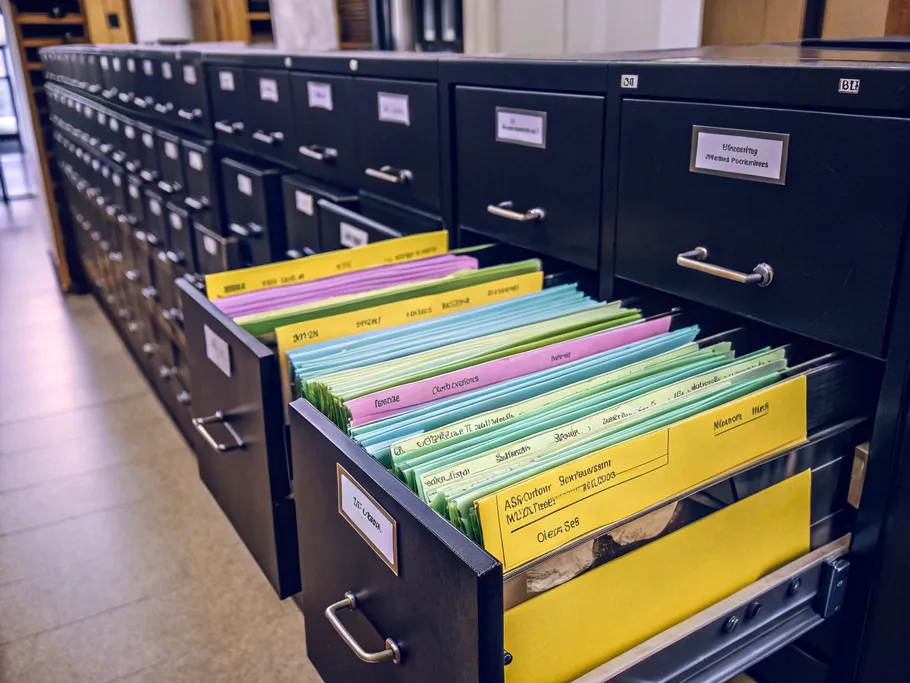Alright, let’s dive into the magical world of prepaid rent. You know, that moment when you hand over a chunk of cash to your landlord before you’ve even set foot in your new office space? Yeah, that. It’s like paying for a year’s worth of coffee upfront—bold move, my friend. But what does this mean for your accounting books? Is prepaid rent some kind of financial wizardry?
Think of prepaid rent as buying concert tickets for a show next month. You’ve paid now, but the real fun begins later. In the accounting universe, this upfront payment isn’t just lost in the void; it actually sits somewhere special on your balance sheet.

In this article, we’re unraveling the mystery of what type of account prepaid rent is, why it matters, and how to record it without losing your sanity (or your calculator). Ready to become the financial guru you were born to be? Let’s get started!
Related: Merchandise inventory is what type of account?
Prepaid Rent Explained
Prepaid rent is like money in accounting limbo. You’ve paid your landlord, but you haven’t “used up” the space yet. So where does that cash go in your books? It sits happily on your balance sheet as an asset, waiting for time to pass.
Let’s make it real:
- You hand over $600,000 to your landlord for the next six months of office rent. That’s a cool $100,000 per month.
- Fast forward four months. You’ve occupied the space, sipping lattes and building your empire. You’ve “used up” $400,000 worth of rent.
- The remaining $200,000 is still sitting pretty as prepaid rent on your balance sheet. It’s the portion you’ve paid but haven’t consumed yet.
The $400,000 you’ve “spent” shows up on your income statement as a rent expense. Meanwhile, the remaining $200,000 stays on the balance sheet, reminding everyone that you have future economic benefits coming your way.
Think of prepaid rent as buying a season ticket for your favorite sports team. You’ve paid upfront, but the games (and glory) are spread over several months. 🏀
What Type of Account Is Prepaid Rent?
Prepaid rent is a current asset account. Yep, you read that right. It’s an asset because it represents a future benefit for your business. Think about it: you’ve shelled out cash now to reduce your rent expenses in the future. That’s like buying in bulk to save money—smart move!
Here’s the lowdown on why prepaid rent qualifies as an asset:
- Future Economic Benefit: Assets are things that bring value to your business, now or later. Prepaid rent means you have the right to use a space in the future that you’ve already paid for.
- Something You Own: Okay, you don’t own the building, but you “own” the right to use it for the prepaid period.
- Reduces Future Expenses: Prepaying rent decreases your expenses down the line. That’s value in the bank (or rather, on the balance sheet).
When you hand over that rent check in advance, it doesn’t immediately hit your income statement as an expense. Why? Because you haven’t used the space yet. Recording it as an expense now would be like reviewing a movie before it’s released—you might be jumping the gun.
Instead, the amount goes into the Prepaid Rent Account on your balance sheet. Your cash account goes down (since you’ve paid out), and your prepaid rent asset account goes up. It’s a bit of accounting magic that keeps everything balanced.
Now, unless you’re prepaying rent for more than a year (which is rare unless you’re making some bold moves), prepaid rent sits under the current assets section on your balance sheet. It’s like a financial placeholder for future rent expenses.
Journal Entries for Prepaid Rent as an Asset
Time to roll up those sleeves and dive into some prepaid rent journal entries! Don’t worry, it’s not as scary as it sounds. Let’s see how prepaid rent gets treated in the accounting world.
Scenario: ABC Ltd is renting an office space (hello, corner office with a view!) and decides to pay six months’ rent in advance. They hand over a total of $120,000 for the six months. So, how does this look in their books?

First, the initial journal entry when they make the payment:
| Account | Debit | Credit |
|---|---|---|
| Prepaid Rent Account | $120,000 | |
| Cash Account | $120,000 |
Journal entry to record the advance payment of rent.
Notice how the Prepaid Rent Account (an asset) is debited. In accounting lingo, assets increase with debits. Meanwhile, cash (also an asset) is credited because, let’s face it, the money’s out the door. 💸
Now, as each glorious month of office occupancy passes, ABC Ltd needs to recognize the rent expense. Since they prepaid for six months, that’s $20,000 per month ($120,000 divided by 6 months).
Here’s the adjusting entry for prepaid rent at the end of each month:
| Account | Debit | Credit |
|---|---|---|
| Rent Expense Account | $20,000 | |
| Prepaid Rent Account | $20,000 |
Journal entry to record the monthly rent expense.
Here, we’re moving $20,000 from the Prepaid Rent Account (asset) to the Rent Expense Account (expense). It’s like transferring money from your savings to checking—only in accounting terms.
Pro Tip: Don’t forget to make these adjusting entries each month! If you neglect this step, your financial statements will look like you’ve got more assets than you actually do, and your expenses will be understated. Essentially, you’d be wearing rose-colored glasses, and no one wants misleading financials. 😎
That’s why diligent bookkeepers keep a close eye on the prepaid rent account and adjust it regularly. It keeps everything on the up and up when it’s time to close the books.
Related: What type is statement of retained earnings?
Prepaid Rent as a Current Asset Account
Let’s circle back and cement this concept: Prepaid rent is a current asset account. It’s the amount of rent you’ve paid in advance for your dazzling office space (or cozy corner if you’re starting small). Why is it a current asset? Because it’s going to be used up within the next 12 months, bringing value to your business over several accounting periods.
Why Is Prepaid Rent an Asset?
So, why is prepaid rent an asset? Well, think of it this way: you’ve parted ways with your cash now, but in return, you have the right to occupy and use that office space in the future. That’s a future economic benefit, which is the very definition of an asset in accounting terms.
Here’s the breakdown:
- When you pay the rent upfront, the amount goes into the Prepaid Rent Account (an asset on the balance sheet).
- As each month passes and you enjoy the sweet, sweet benefits of your rented space, a portion of that prepaid rent is expensed.
- This expense gets recorded on your Income Statement under rent expense.
According to the Generally Accepted Accounting Principles (GAAP) and its matching principle, expenses should be recorded in the same period as the revenues they help generate. Since you haven’t “used” the rent at the time of payment, you can’t record it as an expense just yet. That would be like eating dessert before dinner—tempting, but not how things are usually done. 🍰
Instead, you wait until you’ve occupied the space to expense the rent. This keeps your financial statements accurate and your accountants happy.
Related: Sales revenue is what type of account?
Prepaid Rent as a Permanent Account
Alright, let’s wade a bit deeper into accounting waters without getting overwhelmed. Here’s a fancy term: permanent account. Is prepaid rent a permanent account? You bet!

Here’s why:
- Permanent accounts stick around. They aren’t closed at the end of the accounting period. They just keep on trucking into the next one.
- Balance Sheet Accounts are Permanent. Assets, liabilities, and equity accounts live on the balance sheet and are considered permanent. Since prepaid rent is an asset, it fits right into this category.
So, even when you close out your income statement at the end of the year, your prepaid rent balance carries over. It’s like that friend who stays on your couch just a little longer than expected—they’re still there when the new year rolls in.
Now, once you’ve used up the prepaid rent, it gets moved to the Rent Expense Account on your income statement. Rent expense is a temporary account, which means it gets zeroed out at the end of the accounting period to make room for the next period’s expenses. It’s like hitting the reset button.
Remember, accounting for prepaid expenses under GAAP means you can’t record prepaid rent as an expense until you’ve actually incurred it. No sneaky shortcuts here! 📆
See also: What type of Account is Sales Returns and Allowances?
Takeaways
- Prepaid Rent is a Current Asset: It’s an advance payment that provides future economic benefits, sitting pretty on your balance sheet.
- Accounting for Prepaid Rent: When you prepay rent, debit the Prepaid Rent Account and credit Cash. As you consume the rent, adjust by debiting Rent Expense and crediting Prepaid Rent.
- GAAP Matching Principle: Expenses must be recorded in the period they are incurred, not when they’re paid. That’s why prepaid rent isn’t expensed immediately.

- Permanent vs. Temporary Accounts: Prepaid Rent is a permanent account (balance sheet), while Rent Expense is a temporary account (income statement) that resets each period.
- Don’t Forget Adjusting Entries: Failing to adjust your prepaid rent can lead to inaccurate financial statements, overstating assets and understating expenses.
